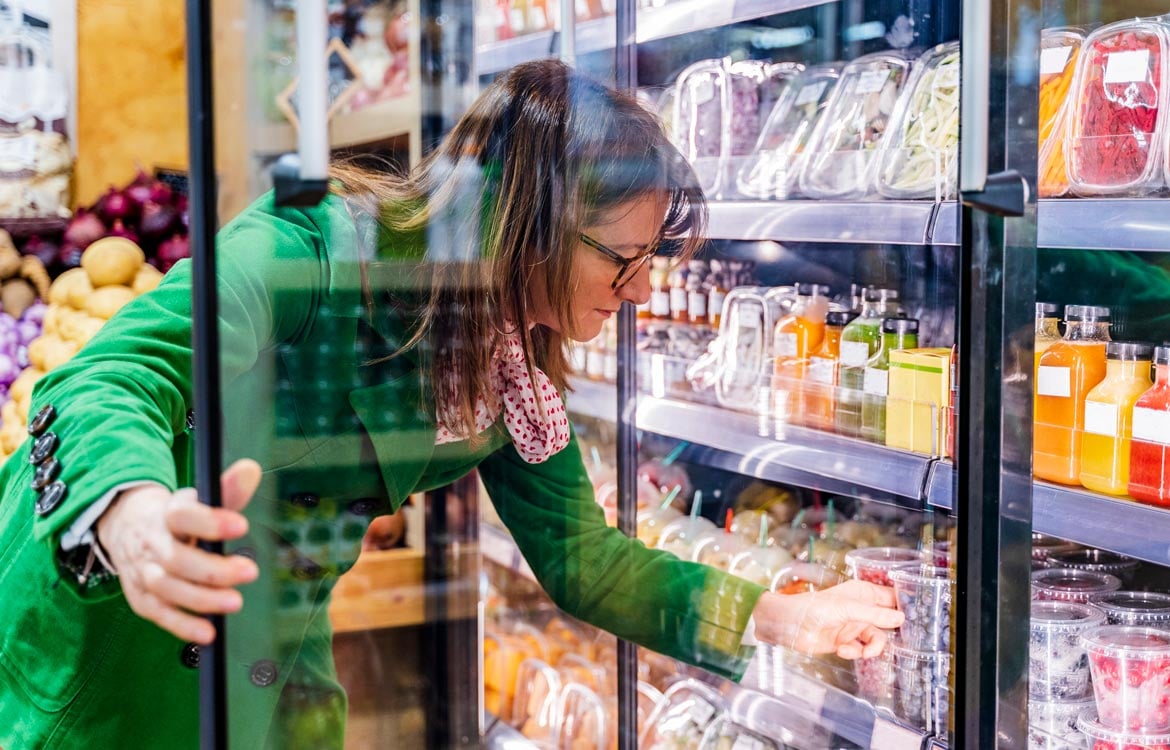Fake Healthy Foods: 6 Foods We Think are Healthy

What Healthy Food are Actually Unhealthy?
When you think about healthy foods, what comes to mind? Acai fruit? Yogurt? Oatmeal? Our perception of what food is healthful is influenced by a wide range of factors: scientific studies, stories in the media, what our mother told us and what food manufacturers want us to believe.
While some “healthy” foods have real nutritional value (raw fruit and vegetables, for example) – others, not so much. Some of the foods we consider “healthy” often have benefits in their natural form. But as the food undergoes processing, its nutrients are stripped and replaced with flavorings, sugar, salt and fat.
Here are six foods that have a health veneer – but aren’t all that healthy. You’re better off limiting your intake.
Foods that Seem Healthy but Aren't
Dried fruit
- Why it’s considered healthy: It’s fruit, which are nutrient-dense and should be a staple in our diets. But drying fruit changes the concentration of nutrients, making it a double-edged sword. On the positive side, dried fruit has more antioxidants and fiber than fresh fruit, which helps lower your risk for many chronic diseases.
- Why it really isn’t: But dried fruit is much higher in sugar and calories than fresh fruit. This can be problematic if you have diabetes or weight issues. Dried fruit also tends to stick to teeth, potentially damaging them and creating dental problems. Some packaged dried fruits also have added sugar and preservatives. Don’t forget, dried fruit is used in trail mix – another popular snack touted as healthy even though it’s often loaded with fat, added sugar and salt.
- Alternatives: Fresh fruit or very small portion sizes
Granola
- Why it’s considered healthy: Granola is rich in protein, nutrients and fiber, making it a satisfying breakfast or snack. Homemade granola recipes call for wholesome ingredients such as oats, raw nuts, raw seeds, raisins and natural sweeteners (often honey).
- Why it really isn’t: Most people don’t make their own granola – they buy it. Commercially packaged granola is often high in calories, fat and sugar. Lower quality granola is often used in granola bars and fruit-yogurt-granola parfaits.
- Alternatives: If you can’t make your own granola, consider buying a top-rated packaged granola or snack on raw nuts.
Acai Bowls
- Why it’s considered healthy: Acai berries are a good source of healthy fats and trace minerals.
- Why it really isn’t: The acai in bowls is processed – pureed with added sugar and preservatives. Commercial acai bowls tend to be very high in calories and sugar. (This also includes acai popsicles. Even those marketed as low in sugar often list corn syrup and high fructose corn syrup as ingredients.) Plus, toppings also tend be high in sugar including more fruit, packaged granola and peanut butter, which often has added sugar.
- Alternatives: Eat fresh berries. If you really love bowls, swap the acai puree with plain Greek yogurt to drop some of the sugar. You also can make bowls at home, using acai puree and granola made from scratch and natural peanut butter.
Flavored Oatmeal
- Why it’s considered healthy: Oatmeal is a whole grain, full of nutrients and fiber. Eating it regularly, can help decrease your risk for heart disease by lowering cholesterol, controlling blood sugar and making you feel full longer – contributing to weight loss.
- Why it’s not: Instant, flavored oatmeal is a very convenient alternative to oats that you need to cook like steel-cut, rolled or old-fashioned. It comes in a variety of flavors. But some brands of instant oatmeal are so high in sugar and salt, the health benefits of the oatmeal are negated. Processed oatmeal can also often be cross contaminated with gluten — so beware if you’re allergic or have Celiac. Harsh truth here: Oatmeal cookies are not typically healthier than other cookies. They’re usually made with flour, sugar, butter, baking soda and eggs – just like other cookies.
- Alternatives: Eat cooked plain, steel-cut oatmeal (you can cook it overnight in your slow cooker). Flavor with fresh berries and/or natural peanut butter.
Flavored Yogurt
- Why it’s considered healthy: Yogurt has live cultures (also known as probiotics) which enhance the gut biome. It’s also high in protein and bone-building calcium. Some studies suggest it even helps strengthen the immune system.
- Why it really isn’t: Most of the yogurt consumed in the U.S. is flavored. A survey conducted in 2017 found flavor to be the driving force behind yogurt purchases, not health benefits. Flavored yogurt is quite high in sugar. In fact, researchers from the United Kingdom found the average sugar content in yogurt exceeded the low-sugar threshold under European Union regulators, according to a study published in BMJ Open. This means the sugar level of many brands of yogurt fell below the dessert category, but much higher healthier foods. Flavored yogurt isn’t the only problem. You might choose yogurt covered pretzels, nuts and raisins thinking it’s a healthier option to chocolate covered snacks. But yogurt and yogurt coating aren’t the same thing. Yogurt coating is more like a frosting that includes yogurt as an ingredient, along with sugar, salt and hydrogenated palm kernel oil.
- Alternatives: You don’t have to give up yogurt. Choose plain or plain Greek yogurt and add fresh berries for flavor.
Bottled Smoothies and Green Juices
- Why it’s considered healthy: Smoothies and juices are usually made with healthy ingredients like fruits, vegetables and yogurt.
- Why it really isn’t: Bottled smoothies and juices tend to be very high in sugar. Most people don’t love the taste of blended vegetables, so lots of fruit or sugar is added to make it palatable. Some restaurant smoothies use flavored or frozen yogurt, which means even more sugar.
- Alternatives: Make your own smoothies and green juices. This will allow you to control how much fruit and sugary ingredients you use. Or skip the smoothie or juice altogether and just eat your fruit and vegetables.
Runner Ups: Limit Your Intake of these Foods
These foods and beverages have been around for years and considered healthier options, but they’re really not.
- Flavored rice cakes – Rice cakes became popular back in the 1990s as a low-carb, low-sugar snack helpful for managing weight. They’re not as popular now, but they’re still widely available in supermarkets. Here’s the problem: While rice cakes are low carb, they contain no fiber and convert to sugar quickly. Flavored rice cakes typically have added sugar. They also have nearly zero nutritional value. When you eat them, you’re getting all the negatives of a high glycemic index food – one that raises blood sugar quickly – and very little benefit. If you’re eating one as a low-calorie snack, the quick rush of insulin to your blood stream may actually make you hungrier. If you like rice cakes, choose a flavor low in sugar and combine it with fats, fiber or protein like peanut butter. This will slow absorption into the blood stream.
- Flavored coconut water – Coconut water became huge about 10 years ago. Unflavored coconut water, often dubbed “Mother Nature’s sports drink,” is a very good sources of electrolytes, which helps you rehydrate, prevents muscle cramps and controls blood pressure. But many people aren’t thrilled with the natural flavor. Artificially fruit-flavored varieties are usually jacked with sugar. If you’re not a fan of plain coconut water, infuse it with fresh or frozen blueberries, blackberries and/or strawberries as opposed to buying flavored.
- Margarine – Margarine, an older, vegetable oil-based product, was created as a heart-healthier alternative to butter. But studies have shown that the trans fats in margarine raises your risk for heart disease by increasing bad cholesterol, lowering good cholesterol and making blood platelets stickier. Grass-fed butter is recognized as a better option to regular butter and margarine. But if you’re not thrilled with the idea of butter, you can use hummus and/or guacamole as a spread and plain Greek yogurt to top potatoes.
- Diet sodas – Diet sodas are marketed as healthier, weight friendlier versions of regular soda, which are very high in sugar. But diet sodas have artificial sweeteners which are linked to increased cravings of sweet foods, cavities and unhealthy changes in gut microbiome. A healthier alternative to soda is soda water (also known as sparkling water and seltzer).
Shop Smarter
Next time you shop, avoid the hype. Start by reading the nutrition labels of the foods you are buying, keeping the following in mind:
- You shouldn't exceed 25 grams of added sugar for women and 37.5 grams for men grams per day.
- Your sodium intake should be 1,500 mg daily.
- Saturated fat intake should be about 10 percent of calories, which is 22 grams for a 2,000 calorie a day diet.
Also, keep this rule of thumb in mind when buying “healthy” foods: Fruits, vegetables, grains and nuts are almost always healthier in their natural state. It’s when food manufacturers start tinkering with them that they become less healthy.
If you have questions about your diet, consult your doctor. If you don’t have a primary care physician, consider partnering with an MDVIP-affiliated physician. They have time to really work with you and develop a wellness plan that can help you eat healthier. Find a physician near you and begin your partnership in health »





